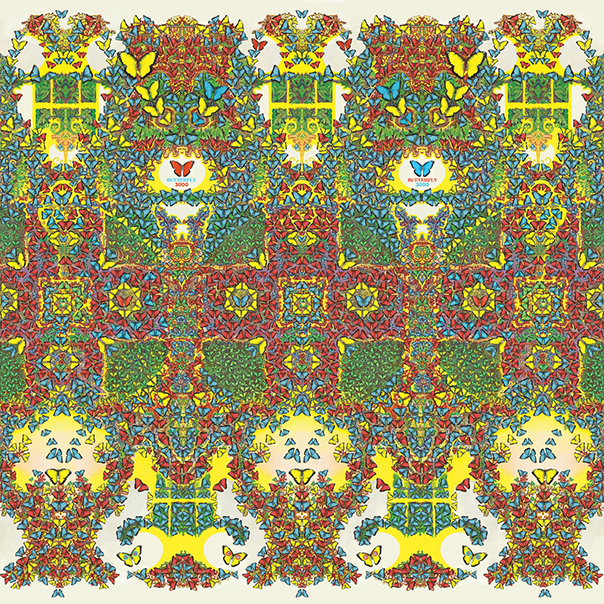King Gizzard and the Lizard Wizard dial down the eclecticism on ‘Butterfly 3000’

King Gizzard and the Lizard Wizard, “Butterfly 3000.”
By Thomas Richards
Australian band King Gizzard and the Lizard Wizard is still able to surprise even longtime listeners with the directions its music takes it. Released only a few months after their last album, L.W. and three-fourths of a year since K.G., Butterfly 3000 shifts the band’s direction from microtonal progressive rock to synth-heavy dream-pop.
Butterfly 3000
King Gizzard and the Lizard Wizard
KGLW, June 11
6/10
Apart from Paper Mache Dream Balloon, the new album is arguably the band’s strongest vocal performance to date.
The highlights here are clearly “Shanghai” and “Interior People.” The former is the mellowest track on the album. In addition to its smooth bass line, the song also features some of the most complex vocals by multi-instrumentalist Stu Mackenzie, mirroring much of the lead synth. While it doesn’t necessarily work when the band uses this method on the guitar, the timbre of Mackenzie’s voice works wonders with the synth patch.
This is in contrast with Ambrose Kenny-Smith’s part, which directly follows it. Kenny-Smith’s voice is always a pleasure to hear, and its clear, high-pitched tone works well opposite Mackenzie’s lower and somewhat rougher voice. “Shanghai” also displays the best guitar work on the album. Along with the added flute-like mellotron sound accompanying it, it’s a joy to listen to.
“Interior People” is the closest King Gizzard and the Lizard Wizard have reached to modern pop music thus far. Its great harmonies and strong hooks brings listeners in, but what really sets this one apart is its top-notch production; among the best in the band’s catalog. Joey Walker, in his only solo mixing credit on the album, outdid himself on it. The tones of the synths in particular are amazing, while the layered synthesizers create something greater than the sum of their parts.
The record, however, is not devoid of faults. King Gizzard and the Lizard Wizard have fallen into the trap of repetition on other albums, and this may be their hardest fall yet. While the album has an identity alongside others, very few of these songs do individually. The addition of the acoustic guitar, while not detrimental in itself, creates for a sameness in terms of feel for sound and playing style. Because some of the tracks sound so similar, listeners may end up feeling a bit worn out.
This release also has some of the weakest tracks in King Gizzard’s songbook; “Dreams” and “2.02 Killer Year” could be considered filler and in many ways sound more like early demo tapes than finished products.
Ultimately, this album feels like too few ideas spread too thin. While I admire the experimentation this band always employs, which usually makes its albums interesting, Butterfly 3000 feels rushed. While the band tests our new waters here, again, it ultimately settled on a single sound. That may work for some artists, King Gizzard is known for throwing everything against the wall and not being boxed in. The band feels boxed in here, however. The result is a bit of a disappointment compared to its previous work.
